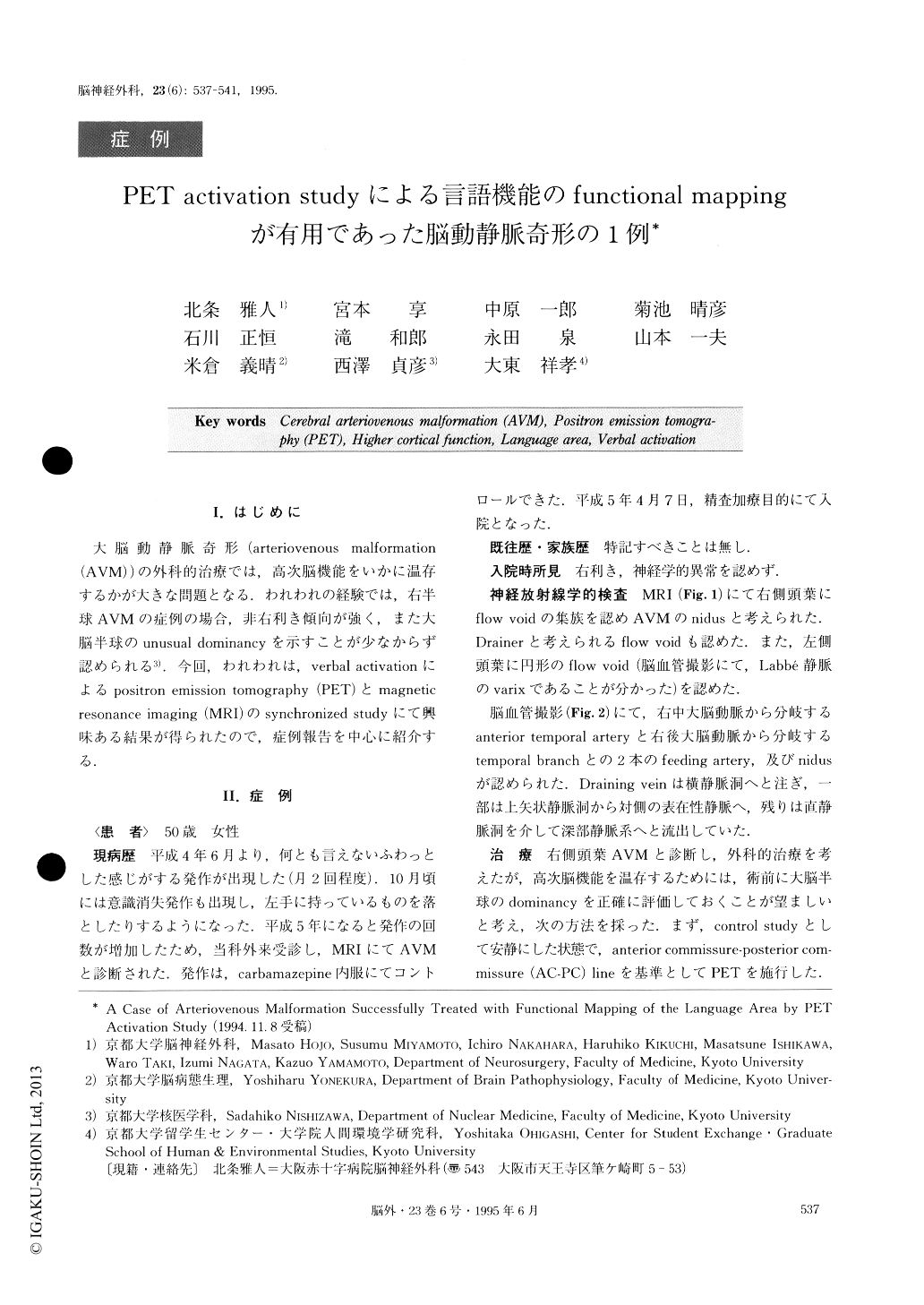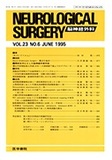Japanese
English
- 有料閲覧
- Abstract 文献概要
- 1ページ目 Look Inside
I.はじめに
大脳動静脈奇形(arteriovenous malformation(AVM))の外科的治療では,高次脳機能をいかに温存するかが大きな問題となる.われわれの経験では,右半球AVMの症例の場合,非右利き傾向が強く,また大脳半球のunusual dominancyを示すことが少なからず認められる3).今回,われわれは,verbal activationによるpositron emission tomography(PET)とmagnetic resonance imaging(MRI)のsynchronized studyにて興味ある結果が得られたので,症例報告を中心に紹介する.
The authors report a case of temporal AVM safely treated by mapping the language area with PET activa-tion study. The patient was a 50-year-old woman with temporal epilepsy as her chief complaint. MRI and angiography revealed a right temporal AVM. Before surgical treatment, we assessed the dominant hemi-sphere with PET activation study. We performed PET scanning while the patient was playing “capping” (called “Shiritori”in Japanese), from which we sub-tracted PET images performed when she was in a rest-ing state, and then we superimposed those images upon MRIs. The blood flow increased in the left frontal oper-culum (Broca's area), the left caudal head, the left putamen and the right cerebellar hemisphere. We were thus able to determine that her left hemisphere was dominant, and that it was safe to undertake emboliza-tion and operation for the AVM. Postoperative course was uneventfull and higher cortical functions were pre-served perfectly.
In cases of cerebral AVMs, unusual dominancy of cerebral hemispheres is often encountered, and so, preoperative evaluation of the relation of AVM to the eloquent cortex is essential. In our study, blood flow in-creased in some areas other than the language area, but they were considered to be areas related to phonation, and we think that we were able to map the language area. Though this method is still in its preliminary stage, we think it gives us useful information for sur-gical treatment of cerebral AVMs.

Copyright © 1995, Igaku-Shoin Ltd. All rights reserved.


